本次开始NIO网络编程,之前已经说过BIO,对于阻塞IO里面的问题一定有了清晰的认识,在JDK1.4版本后,提供了新的JAVA IO操作非阻塞API,用意替换JAVA IO 和JAVA NetWorking相关的API。NIO其实有个名称叫new IO。
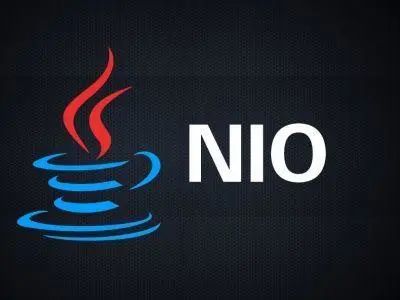
(一)NIO
① 介绍
java.nio全称java non-blocking IO(实际上是 new io),是指JDK 1.4 及以上版本里提供的新api(New IO) ,为所有的原始类型(boolean类型除外)提供缓存支持的数据容器,使用它可以提供非阻塞式的高伸缩性网络。
HTTP2.0使用了多路复用的技术,做到同一个连接并发处理多个请求,而且并发请求的数量比HTTP1.1大了好几个数量级。
② 三大核心组件
高性能网络编程的基础组件,Buffer缓存区、Channel 通道、Selector 选择器。
(二) Buffer缓存区
① 介绍
缓存区本质上是一个可以写入数据的内存块(类似数组),然后可以再次读取。此内存块包含在NIO Buffer 对象中,该对象提供了一组方法,可以更轻松地使用内存块。
相比较直接对数组的操作。Buffer API 更加容易操作和管理。
② 使用Buffer进行数据写入与读取,需要进行如下四个步骤
将数据写入缓冲区。
调用buffer.flip(),转换为读取模式。
缓冲区读取数据。
调用buffer.clear() 或 buffer.compact() 消除缓冲区
③ Buffer工作原理
BUffer三个重要属性,通过完成了数组的封装。
1.capacity 容量:作为一个内存块,Buffer具有一定的固定大小,也称为【容量】。
2.position 位置:写入模式时代表写数据的位置。读取模式时代表读取数据的位置。
3.limit 限制:写入模式,限制等于buffer的容量,读取模式下,limit等于写入的数据量。
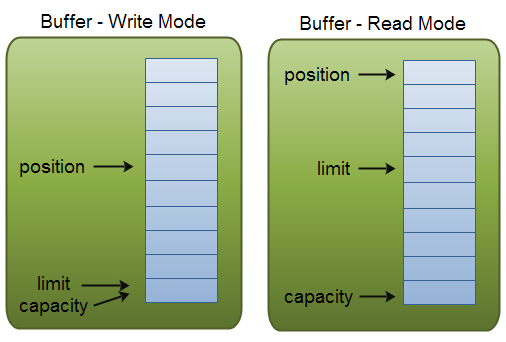
④ 源码
import java.nio.ByteBuffer;
import java.nio.IntBuffer;
import java.nio.LongBuffer;
public class BufferDemo {
public static void main(String[] args) {
// 构建一个byte字节缓冲区,容量是4
//堆内存
ByteBuffer byteBuffer = ByteBuffer.allocate(4);
//堆外内存
// ByteBuffer byteBuffer = ByteBuffer.allocateDirect(4);
// 默认写入模式,查看三个重要的指标
System.out.println(String.format("初始化:capacity容量:%s, position位置:%s, limit限制:%s", byteBuffer.capacity(),
byteBuffer.position(), byteBuffer.limit()));
// 写入2字节的数据
byteBuffer.put((byte) 1);
byteBuffer.put((byte) 2);
byteBuffer.put((byte) 3);
// 再看数据
System.out.println(String.format("写入3字节后,capacity容量:%s, position位置:%s, limit限制:%s", byteBuffer.capacity(),
byteBuffer.position(), byteBuffer.limit()));
// 转换为读取模式(不调用flip方法,也是可以读取数据的,但是position记录读取的位置不对)
System.out.println("#######开始读取");
byteBuffer.flip();
byte a = byteBuffer.get();
System.out.println(a);
byte b = byteBuffer.get();
System.out.println(b);
System.out.println(String.format("读取2字节数据后,capacity容量:%s, position位置:%s, limit限制:%s", byteBuffer.capacity(),
byteBuffer.position(), byteBuffer.limit()));
// 继续写入3字节,此时读模式下,limit=3,position=2.继续写入只能覆盖写入一条数据
// clear()方法清除整个缓冲区。compact()方法仅清除已阅读的数据。转为写入模式
byteBuffer.compact(); // buffer : 1 , 3
byteBuffer.put((byte) 3);
byteBuffer.put((byte) 4);
byteBuffer.put((byte) 5);
System.out.println(String.format("最终的情况,capacity容量:%s, position位置:%s, limit限制:%s", byteBuffer.capacity(),
byteBuffer.position(), byteBuffer.limit()));
// rewind() 重置position为0
// mark() 标记position的位置
// reset() 重置position为上次mark()标记的位置
}
}
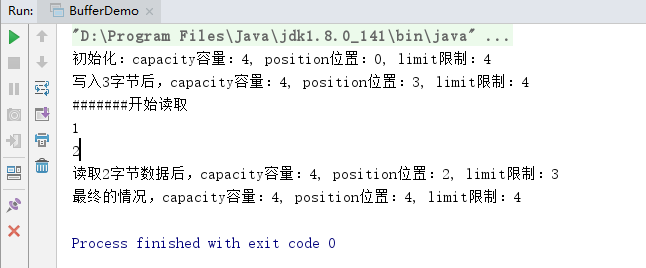
⑤ ByteBuffer 内存类型
ByteBuffer 为性能关键型代码提供了直接内存(direct堆外)和非直接内存(heap堆)两种实现,堆外内存获取的方式
ByteBuffer directBytebuffer = ByteBuffer.allocateDirect(noBytes);
好处
进行网络IO 或者 文件IO时比heapBuffer 少一次拷贝,(file/socket —— OS memory —— jvm heap )GC会移动对象内存,在写file 或 socket的过程中,JVM的实现中,会先把数据复制到堆外,在进行写入。
GC范围之外,降低GC压力,但实现了自动管理。DirectByteBuffer 中 有一个Cleaner 对象(PhantomReference) ,Cleaner被GC前会执行clean 方法,触发DirectByteBuffer 中定义Deallocator
建议
性能确实可观的时候才去使用,分配给大型,长寿命(网络传输,文件读写场景)
通过虚拟机参数MaxDirectMemorySize限制大小,防止耗尽整个机器的内存,在JVM之外的内存无法监控。
(三)Channel 通道
① 介绍
Channel的API 涵盖了UDP、TCP网络和文件IO,FileChannel,DatagramChannel,SocketChannel,ServerSocketChannel。
② 和标准IO Stream操作的区别
在一个通道内进行读取和写入stream通常是单向的(input 或 output),可以非堵塞读取和写入通道,通道中读取或写入缓冲区。
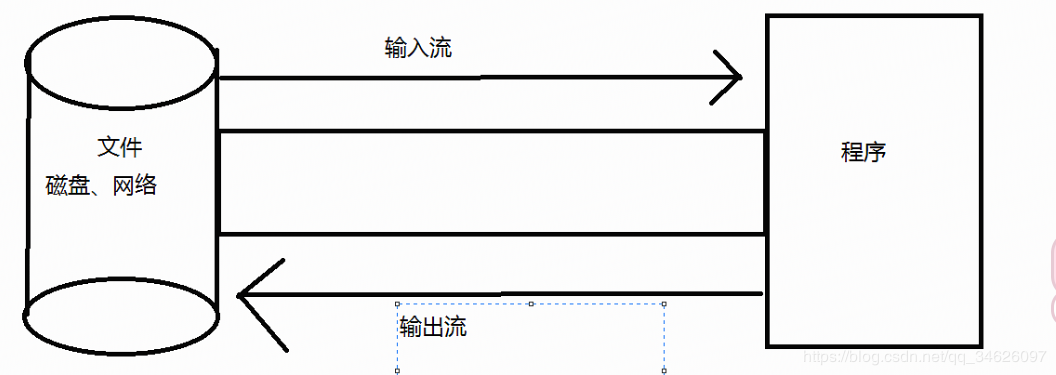
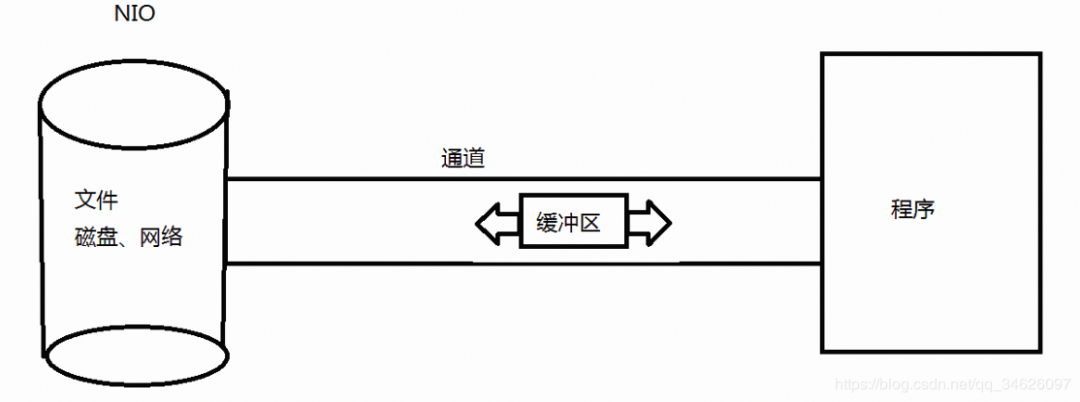
③ SocketChannel
SocketChannel用于建立TCP网络连接,类似java.net.Socket。有两种创建socketChannel形式
1.客户端主动发起和服务器的连接
2.服务器获取的新连接
write写
在尚未写入任何内容时可能就返回了。需要在循环中调用write()
read读
read() 方法可能直接返回而根本不读取任何数据,根据返回的int值判断读取了多少字节。
④ ServerSocketChannel
ServerSocketChannel 可能监听新建立的TCP连接通道,类似ServerSocket。
ServerSocketChannel.accepta()
如果该通道处于飞度赛模式,那么如何没有挂起的连接,该方法将立即返回null。必须检查返回的SocketChannel是否为null。
⑤ 源码
import java.net.InetSocketAddress;
import java.nio.ByteBuffer;
import java.nio.channels.SocketChannel;
import java.util.Scanner;
public class NIOClient {
public static void main(String[] args) throws Exception {
SocketChannel socketChannel = SocketChannel.open();
socketChannel.configureBlocking(false);
socketChannel.connect(new InetSocketAddress("127.0.0.1", 8080));
while (!socketChannel.finishConnect()) {
// 没连接上,则一直等待
Thread.yield();
}
Scanner scanner = new Scanner(System.in);
System.out.println("请输入:");
// 发送内容
String msg = scanner.nextLine();
ByteBuffer buffer = ByteBuffer.wrap(msg.getBytes());
while (buffer.hasRemaining()) {
socketChannel.write(buffer);
}
// 读取响应
System.out.println("收到服务端响应:");
ByteBuffer requestBuffer = ByteBuffer.allocate(1024);
while (socketChannel.isOpen() && socketChannel.read(requestBuffer) != -1) {
// 长连接情况下,需要手动判断数据有没有读取结束 (此处做一个简单的判断: 超过0字节就认为请求结束了)
if (requestBuffer.position() > 0) break;
}
requestBuffer.flip();
byte[] content = new byte[requestBuffer.limit()];
requestBuffer.get(content);
System.out.println(new String(content));
scanner.close();
socketChannel.close();
}
}
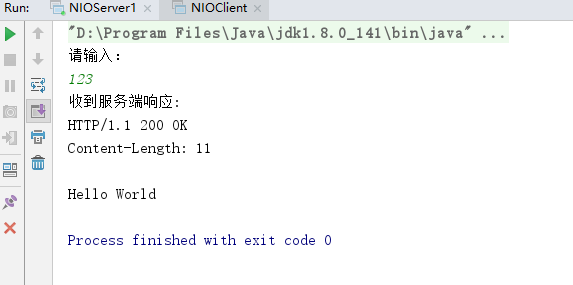
import java.io.IOException;
import java.net.InetSocketAddress;
import java.nio.ByteBuffer;
import java.nio.channels.ServerSocketChannel;
import java.nio.channels.SocketChannel;
import java.util.ArrayList;
import java.util.Iterator;
/**
* 直接基于非阻塞的写法,一个线程处理轮询所有请求
*/
public class NIOServer1 {
/**
* 已经建立连接的集合
*/
private static ArrayList channels = new ArrayList<>();public static void main(String[] args) throws Exception {// 创建网络服务端
ServerSocketChannel serverSocketChannel = ServerSocketChannel.open();
serverSocketChannel.configureBlocking(false); // 设置为非阻塞模式
serverSocketChannel.socket().bind(new InetSocketAddress(8080)); // 绑定端口
System.out.println("启动成功");while (true) {
SocketChannel socketChannel = serverSocketChannel.accept(); // 获取新tcp连接通道// tcp请求 读取/响应if (socketChannel != null) {
System.out.println("收到新连接 : " + socketChannel.getRemoteAddress());
socketChannel.configureBlocking(false); // 默认是阻塞的,一定要设置为非阻塞
channels.add(socketChannel);
} else {// 没有新连接的情况下,就去处理现有连接的数据,处理完的就删除掉
Iterator iterator = channels.iterator();while (iterator.hasNext()) {
SocketChannel ch = iterator.next();try {
ByteBuffer requestBuffer = ByteBuffer.allocate(1024);if (ch.read(requestBuffer) == 0) {// 等于0,代表这个通道没有数据需要处理,那就待会再处理continue;
}while (ch.isOpen() && ch.read(requestBuffer) != -1) {// 长连接情况下,需要手动判断数据有没有读取结束 (此处做一个简单的判断: 超过0字节就认为请求结束了)if (requestBuffer.position() > 0) break;
}if(requestBuffer.position() == 0) continue; // 如果没数据了, 则不继续后面的处理
requestBuffer.flip();byte[] content = new byte[requestBuffer.limit()];
requestBuffer.get(content);
System.out.println(new String(content));
System.out.println("收到数据,来自:" + ch.getRemoteAddress());// 响应结果 200
String response = "HTTP/1.1 200 OK\r\n" +"Content-Length: 11\r\n\r\n" +"Hello World";
ByteBuffer buffer = ByteBuffer.wrap(response.getBytes());while (buffer.hasRemaining()) {
ch.write(buffer);
}
iterator.remove();
} catch (IOException e) {
e.printStackTrace();
iterator.remove();
}
}
}
}// 用到了非阻塞的API, 再设计上,和BIO可以有很大的不同// 问题: 轮询通道的方式,低效,浪费CPU
}
}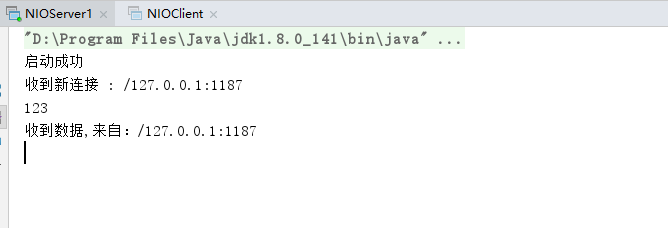
(四)Select选择器
① 介绍
Selector 是一个Java NIO 组件,可以检查一个或多个NIO通道,并确定哪些通道已准备好进行读取或写入,实现单个线程可以管理多个通道,从而管理或多个网络连接。
② selector 监听多个 channel的不同事件
Connect 连接(SelectionKey.OP_CONNECT)
Accept 准备就绪(OP_ACCEPT)
Read 读取(OP_READ)
Write 写入(OP_WRITE)
③ selector 选择器
一个线程处理多个通道的核心概念理解:事件驱动机制。
非堵塞的网络通道下,开发者通过Selector注册对于通道感兴趣的事件类型,线程通过监听事件来触发响应的代码执行(最底层hi操作系统的多路复用机制)
④ 源码
import java.io.IOException;
import java.net.InetSocketAddress;
import java.nio.ByteBuffer;
import java.nio.channels.*;
import java.util.Iterator;
import java.util.Set;
import java.util.concurrent.ExecutorService;
import java.util.concurrent.Executors;
/**
* 结合Selector实现的非阻塞服务端(放弃对channel的轮询,借助消息通知机制)
*/
public class NIOServerV2 {
public static void main(String[] args) throws Exception {
// 1. 创建网络服务端ServerSocketChannel
ServerSocketChannel serverSocketChannel = ServerSocketChannel.open();
serverSocketChannel.configureBlocking(false); // 设置为非阻塞模式
// 2. 构建一个Selector选择器,并且将channel注册上去
Selector selector = Selector.open();
SelectionKey selectionKey = serverSocketChannel.register(selector, 0, serverSocketChannel);// 将serverSocketChannel注册到selector
selectionKey.interestOps(SelectionKey.OP_ACCEPT); // 对serverSocketChannel上面的accept事件感兴趣(serverSocketChannel只能支持accept操作)
// 3. 绑定端口
serverSocketChannel.socket().bind(new InetSocketAddress(8080));
System.out.println("启动成功");
while (true) {
// 不再轮询通道,改用下面轮询事件的方式.select方法有阻塞效果,直到有事件通知才会有返回
selector.select();
// 获取事件
Set selectionKeys = selector.selectedKeys();// 遍历查询结果e
Iterator iter = selectionKeys.iterator();while (iter.hasNext()) {// 被封装的查询结果
SelectionKey key = iter.next();
iter.remove();// 关注 Read 和 Accept两个事件if (key.isAcceptable()) {
ServerSocketChannel server = (ServerSocketChannel) key.attachment();// 将拿到的客户端连接通道,注册到selector上面
SocketChannel clientSocketChannel = server.accept(); // mainReactor 轮询accept
clientSocketChannel.configureBlocking(false);
clientSocketChannel.register(selector, SelectionKey.OP_READ, clientSocketChannel);
System.out.println("收到新连接 : " + clientSocketChannel.getRemoteAddress());
}if (key.isReadable()) {
SocketChannel socketChannel = (SocketChannel) key.attachment();try {
ByteBuffer requestBuffer = ByteBuffer.allocate(1024);while (socketChannel.isOpen() && socketChannel.read(requestBuffer) != -1) {// 长连接情况下,需要手动判断数据有没有读取结束 (此处做一个简单的判断: 超过0字节就认为请求结束了)if (requestBuffer.position() > 0) break;
}if(requestBuffer.position() == 0) continue; // 如果没数据了, 则不继续后面的处理
requestBuffer.flip();byte[] content = new byte[requestBuffer.limit()];
requestBuffer.get(content);
System.out.println(new String(content));
System.out.println("收到数据,来自:" + socketChannel.getRemoteAddress());// TODO 业务操作 数据库 接口调用等等// 响应结果 200
String response = "HTTP/1.1 200 OK\r\n" +"Content-Length: 11\r\n\r\n" +"Hello World";
ByteBuffer buffer = ByteBuffer.wrap(response.getBytes());while (buffer.hasRemaining()) {
socketChannel.write(buffer);
}
} catch (IOException e) {// e.printStackTrace();
key.cancel(); // 取消事件订阅
}
}
}
selector.selectNow();
}// 问题: 此处一个selector监听所有事件,一个线程处理所有请求事件. 会成为瓶颈! 要有多线程的运用
}
}
⑤ NIO 和 BIO 的区别
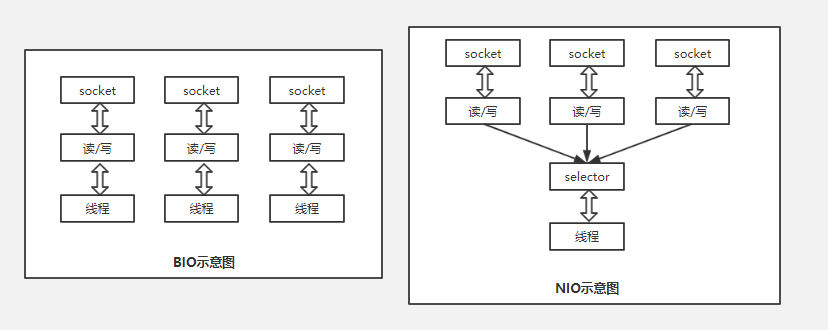
⑥ NIO Reactor的方式
import java.io.IOException;
import java.net.InetSocketAddress;
import java.nio.ByteBuffer;
import java.nio.channels.*;
import java.util.Iterator;
import java.util.Random;
import java.util.Set;
import java.util.concurrent.ExecutorService;
import java.util.concurrent.Executors;
import java.util.concurrent.FutureTask;
import java.util.concurrent.LinkedBlockingQueue;
import java.util.concurrent.atomic.AtomicInteger;
/**
* NIO selector 多路复用reactor线程模型
*/
public class NIOServerV3 {
/** 处理业务操作的线程 */
private static ExecutorService workPool = Executors.newCachedThreadPool();
/**
* 封装了selector.select()等事件轮询的代码
*/
abstract class ReactorThread extends Thread {
Selector selector;
LinkedBlockingQueue taskQueue = new LinkedBlockingQueue<>();/**
* Selector监听到有事件后,调用这个方法
*/public abstract void handler(SelectableChannel channel) throws Exception;private ReactorThread() throws IOException {
selector = Selector.open();
}volatile boolean running = false;@Overridepublic void run() {// 轮询Selector事件while (running) {try {// 执行队列中的任务
Runnable task;while ((task = taskQueue.poll()) != null) {
task.run();
}
selector.select(1000);// 获取查询结果
Set selected = selector.selectedKeys();// 遍历查询结果
Iterator iter = selected.iterator();while (iter.hasNext()) {// 被封装的查询结果
SelectionKey key = iter.next();
iter.remove();int readyOps = key.readyOps();// 关注 Read 和 Accept两个事件if ((readyOps & (SelectionKey.OP_READ | SelectionKey.OP_ACCEPT)) != 0 || readyOps == 0) {try {
SelectableChannel channel = (SelectableChannel) key.attachment();
channel.configureBlocking(false);
handler(channel);if (!channel.isOpen()) {
key.cancel(); // 如果关闭了,就取消这个KEY的订阅
}
} catch (Exception ex) {
key.cancel(); // 如果有异常,就取消这个KEY的订阅
}
}
}
selector.selectNow();
} catch (IOException e) {
e.printStackTrace();
}
}
}private SelectionKey register(SelectableChannel channel) throws Exception {// 为什么register要以任务提交的形式,让reactor线程去处理?// 因为线程在执行channel注册到selector的过程中,会和调用selector.select()方法的线程争用同一把锁// 而select()方法实在eventLoop中通过while循环调用的,争抢的可能性很高,为了让register能更快的执行,就放到同一个线程来处理
FutureTask futureTask = new FutureTask<>(() -> channel.register(selector, 0, channel));
taskQueue.add(futureTask);return futureTask.get();
}private void doStart() {if (!running) {
running = true;
start();
}
}
}private ServerSocketChannel serverSocketChannel;// 1、创建多个线程 - accept处理reactor线程 (accept线程)private ReactorThread[] mainReactorThreads = new ReactorThread[1];// 2、创建多个线程 - io处理reactor线程 (I/O线程)private ReactorThread[] subReactorThreads = new ReactorThread[8];/**
* 初始化线程组
*/private void newGroup() throws IOException {// 创建IO线程,负责处理客户端连接以后socketChannel的IO读写for (int i = 0; i < subReactorThreads.length; i++) {
subReactorThreads[i] = new ReactorThread() {@Overridepublic void handler(SelectableChannel channel) throws IOException {// work线程只负责处理IO处理,不处理accept事件
SocketChannel ch = (SocketChannel) channel;
ByteBuffer requestBuffer = ByteBuffer.allocate(1024);while (ch.isOpen() && ch.read(requestBuffer) != -1) {// 长连接情况下,需要手动判断数据有没有读取结束 (此处做一个简单的判断: 超过0字节就认为请求结束了)if (requestBuffer.position() > 0) break;
}if (requestBuffer.position() == 0) return; // 如果没数据了, 则不继续后面的处理
requestBuffer.flip();byte[] content = new byte[requestBuffer.limit()];
requestBuffer.get(content);
System.out.println(new String(content));
System.out.println(Thread.currentThread().getName() + "收到数据,来自:" + ch.getRemoteAddress());// TODO 业务操作 数据库、接口...
workPool.submit(() -> {
});// 响应结果 200
String response = "HTTP/1.1 200 OK\r\n" +"Content-Length: 11\r\n\r\n" +"Hello World";
ByteBuffer buffer = ByteBuffer.wrap(response.getBytes());while (buffer.hasRemaining()) {
ch.write(buffer);
}
}
};
}// 创建mainReactor线程, 只负责处理serverSocketChannelfor (int i = 0; i < mainReactorThreads.length; i++) {
mainReactorThreads[i] = new ReactorThread() {
AtomicInteger incr = new AtomicInteger(0);@Overridepublic void handler(SelectableChannel channel) throws Exception {// 只做请求分发,不做具体的数据读取
ServerSocketChannel ch = (ServerSocketChannel) channel;
SocketChannel socketChannel = ch.accept();
socketChannel.configureBlocking(false);// 收到连接建立的通知之后,分发给I/O线程继续去读取数据int index = incr.getAndIncrement() % subReactorThreads.length;
ReactorThread workEventLoop = subReactorThreads[index];
workEventLoop.doStart();
SelectionKey selectionKey = workEventLoop.register(socketChannel);
selectionKey.interestOps(SelectionKey.OP_READ);
System.out.println(Thread.currentThread().getName() + "收到新连接 : " + socketChannel.getRemoteAddress());
}
};
}
}/**
* 初始化channel,并且绑定一个eventLoop线程
*
* @throws IOException IO异常
*/private void initAndRegister() throws Exception {// 1、 创建ServerSocketChannel
serverSocketChannel = ServerSocketChannel.open();
serverSocketChannel.configureBlocking(false);// 2、 将serverSocketChannel注册到selectorint index = new Random().nextInt(mainReactorThreads.length);
mainReactorThreads[index].doStart();
SelectionKey selectionKey = mainReactorThreads[index].register(serverSocketChannel);
selectionKey.interestOps(SelectionKey.OP_ACCEPT);
}/**
* 绑定端口
*
* @throws IOException IO异常
*/private void bind() throws IOException {// 1、 正式绑定端口,对外服务
serverSocketChannel.bind(new InetSocketAddress(8080));
System.out.println("启动完成,端口8080");
}public static void main(String[] args) throws Exception {
NIOServerV3 nioServerV3 = new NIOServerV3();
nioServerV3.newGroup(); // 1、 创建main和sub两组线程
nioServerV3.initAndRegister(); // 2、 创建serverSocketChannel,注册到mainReactor线程上的selector上
nioServerV3.bind(); // 3、 为serverSocketChannel绑定端口
}
}PS:NIO为开发者提供了功能丰富及强大的IO处理API,但是在应用开发的过程中,直接使用JDK提供的API,比较繁琐,而且要想将性能进行提升,光有NIO还是不够的,还需要将多线程技术与之结合起来。因为网络编程本身的复杂性,以及JDK API开发的使用难度较高,所以开源社区中,涌出来很多的JDK NIO进行封装了,增强后的网络编程框架,例如:Netty、Mina等。






)











)
